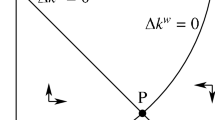Abstract
This note gives the conditions under which there is an interior optimum rate of population growth in a two-generations-overlapping model. These conditions imply complementarity both in production and in consumption. They also validate Samuelson's serendipity theorem.
Similar content being viewed by others
References
Deardorff AV (1976) The optimum growth rate for population: Comment. Int Econ holdRev 17:510–515
Diamond PA (1965) National debt in a neoclassical growth model. Am Econ Rev 55:1126–1150
Gigliotti GA (1983) Total utility, overlapping generations and optimal population. Rev Econ Stud 50:71–86
Jaeger K (1989) The serendipity theorem reconsidered: the three-generations case without inheritance. In: Zimmermann KF (ed) Economic theory of optimal population. Springer, Berlin Heidelberg New York, pp 15–90
Samuelson PA (1975) The optimum growth rate for population. Int Econ Rev 16:531–538
Samuelson PA (1976) The optimum growth rate for population: agreement and evaluations. Int Econ Rev 17:516–525
Author information
Authors and Affiliations
Rights and permissions
About this article
Cite this article
Michele, P., Pestieau, P. Population growth and optimality. J Popul Econ 6, 353–362 (1993). https://doi.org/10.1007/BF00599043
Received:
Accepted:
Issue Date:
DOI: https://doi.org/10.1007/BF00599043




